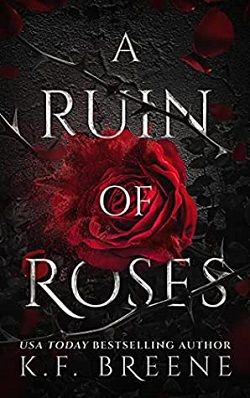The bartender raised his eyebrows, then filled the two glasses, drained the bottle into a third, said, “They’re on me. My condolences,” and turned away.
O’Hara pulled out his cell phone and brought up a photograph on it.
He held it up for Payne to see.
The image was of the severed head of a bearded brown-skinned male on the keyboard of a notebook computer. The difference between that head and Tim O’Brien’s was that it had a handwritten note stuck to the dried blood: Editors of Obrien: This source no longer wishes to talk for your stories. Tomas was warned to stop. Now you are. No more articles. Period. CDNA.
Payne shook his head and turned to O’Hara.
“CDNA?”
“Cartel del Nuevo Acuña.”
“The New Acuña Cartel? Have you talked with Byrth about it?”
O’Hara nodded.
“I did. O’Brien did. Tomas certainly did. Jim put him in touch with the Texas Rangers there. CDNA is a relatively small organization that’s based just across the border from Del Rio, Texas. Its plaza, which is what they call their smuggling routes, skirts the big plaza at Nuevo Laredo, which is twenty miles downstream and controlled by the Gulf Cartel.”
O’Hara picked up his shot glass and held it up before him.
“To Tomas.”
Payne did the same, then they banged the glasses on the wooden bar, then downed the Irish whisky.
“Tomas? Who was he?” Payne then said, feeling the warmth of the alcohol again reach from his throat to his belly.
“A stringer we hired to work with Tim O’Brien,” O’Hara explained. “Tomas Rodriguez, thirty-five, married, one child, a boy, and one on the way.
“Tomas needed work. About six months ago, he was having lunch, sitting at a sidewalk mercado in Acuña, when an elderly man, uninvited, took the seat across from him. The man put a copy of that day’s Acuña Noticias on the table and drummed his fingers on the cover story. It was about four male bodies that had been found in a narco fosa, their hands and feet bound and a single bullet hole in their heads. The story bore Tomas’s byline.”
“A narco fosa?”
“It’s what they call a cartel shallow grave. Just like mob ones in the good ol’ guinea gangster days—whack ?
?em, maybe cut ’em up, maybe not, then bury them in a basement, an unmarked hole in a field, somewhere.
“The man said he’d been ordered to relay a simple message: ‘No mas.’ He said that meant no more coverage of the shallow graves, no more coverage of drugs and humans moving through the plaza near Acuña and across the Rio Grande, no more mention of CDNA. No mas.
“Then the elderly man stood and left.”
“And Tomas didn’t stop,” Payne said, unnecessarily.
O’Hara shook his head.
“Tomas, despite knowing full damn well that journalists are being targeted all over Mexico, did not think much of the old man’s message. He was a newsman, he said, and he reported news. But the next day, after he published a piece on a stash house near where the dead from the shallow grave had last been seen alive, Tomas had been in his newspaper office—it’s a two-room masonry building on the southern edge of town—when the roar of a motorcycle rattled his window. That was immediately followed by the sound of gunfire. He ducked under his desk. When the shooting seemed to be over, he peered out the window and saw that his Volkswagen had been shot up, its windows shattered, the two left tires flat.”
“Jesus,” Payne said.
O’Hara nodded, then went on: “That night he put his wife and their young son on a bus and sent them to stay with relatives in Texas, outside San Antonio.
“He remained in Mexico but backed off on the cartel articles. Then, probably for pure intimidation purposes, they firebombed his newspaper office one night. Now he could not publish the newspaper. No matter. He wasn’t intimidated. He went underground and started publishing about the drug war on the Internet, in a daily blog in addition to social media, writing under La Verdad—‘The Truth.’ When the cartel found out, they offered a bounty to anyone who gave them the name of who was behind La Verdad—or anyone in that person’s family.”
O’Hara pulled up another image on his cell phone. It showed a bloodied, shirtless male body hanging from a rope tied to a bridge overpass. A dirty white bedsheet with hand-painted lettering was draped over the bridge. It was in Spanish. Payne saw that it was signed “CDNA.”
“Someone gave up one of Tomas’s photographers,” O’Hara said, “and, judging by the wounds, the cartel tortured him, most likely trying to get information on Tomas. Then they killed him. Hung him over an Acuña highway as an example. The narco mantra reads ‘This will happen to all who write lies about us on the Internet. You will pay. Signed CDNA.’ Tomas took off for San Antonio.”
“And they killed him there,” Payne said. “Just like O’Brien.”















